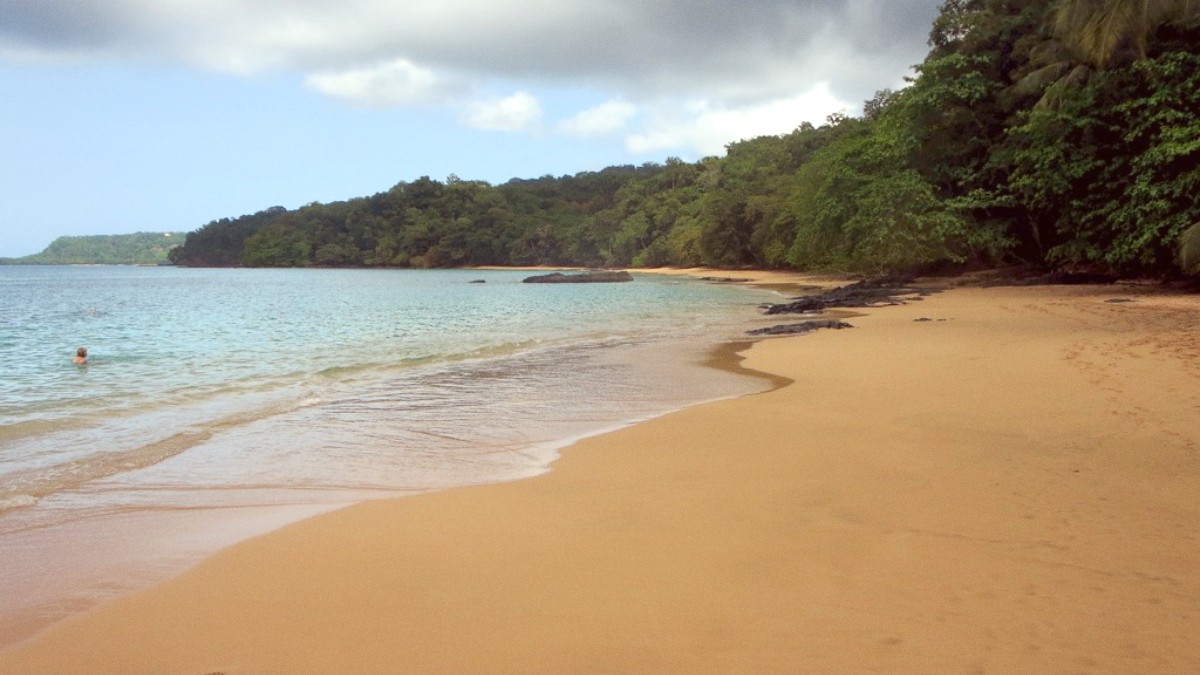
Sao Tome Principe
The island's position on the Equator means tropical fruits and fresh produce year-round. The Gulf of Guinea coastline supplies varied seafood. Historical links with Brazil and Lusophone countries influenced tastes.
Staples and cooking are consistent, but some roças or villages have unique recipes based on history or local produce. Coastal areas focus on seafood; interior areas use more root vegetables and poultry.
Dining is relaxed and informal. Meals are often communal. Greet staff. Tipping is appreciated but not mandatory. Cutlery is common, but some traditional dishes, like funge, are eaten by hand. Wash hands before eating.
Breakfast (Pequeno-almoço) is light (bread, fruit, coffee). Lunch (Almoço) is the main meal (12:00 PM - 2:00 PM). Dinner (Jantar) is later (after 7:00 PM).
Engage your taste buds by trying the island's signature dishes and refreshing beverages.
The national dish. A rich, slow-cooked stew with various fish (smoked/dried), okra, taro leaves, pumpkin, and palm oil. Traditionally with funge or rice.
Find at local restaurants, especially on weekends as it is a celebratory dish.
Manioc (cassava) is a staple, served boiled, fried, or as funge. Feijoada Santomense is a hearty local bean stew, often with seafood or meat.
Common in most local eateries.
Rice cooked with squid in tomato sauce. Moqueca is a creamy fish or seafood stew with coconut milk and palm oil, showing Brazilian links.
Found in seafood restaurants and hotels.
The national beer, a light, refreshing lager available everywhere.
Fermented palm tree sap, sweet and tangy. Caution with hygiene from informal vendors.
Freshly pressed sugar cane juice and flavorful juices from abundant tropical fruits.
Limited but growing. Upscale hotels offer refined experiences with international and Santomean cuisine.
A growing number of restaurants in Sao Tome city offer a mix of Santomean, Portuguese, and sometimes international dishes.
For authentic local flavor at affordable prices, seek out informal eateries and the bustling market.
Not widely available. Sao Tome is predominantly Christian, and Halal or Kosher certification or specific dining options are not common.
Awareness of gluten-free needs or specific food allergies is generally very low. Travelers with severe allergies must exercise extreme caution. Carry an Allergy translation card in Portuguese. Gluten is in many local breads and fried items.
For specific dietary needs, buying fresh ingredients at local markets allows greater control over meals.
Carry your preferred snacks, especially if traveling to remote areas where options are limited.
Formal cooking classes are not widespread. Some eco-lodges or specialized roças (like Roça São João dos Angolares) offer informal cooking demonstrations or participation in local meal preparation.
Visit Roça Monte Café or the Claudio Corallo chocolate factory. Learn about cultivation, bean-to-bar processes, and enjoy chocolate tastings.
Explore coffee growing alongside cocoa on roças. Inquire about visits to smaller vanilla farms for an unique agricultural experience.
A slightly sweet, soft bread, often for breakfast or as a snack.
Simple yet delicious fried bananas, either sweet or savory.
High-quality artisanal chocolate from local producers like Claudio Corallo. An excellent souvenir.
Explore the Mercado Municipal for fresh produce, spices, and a glimpse into local daily life.